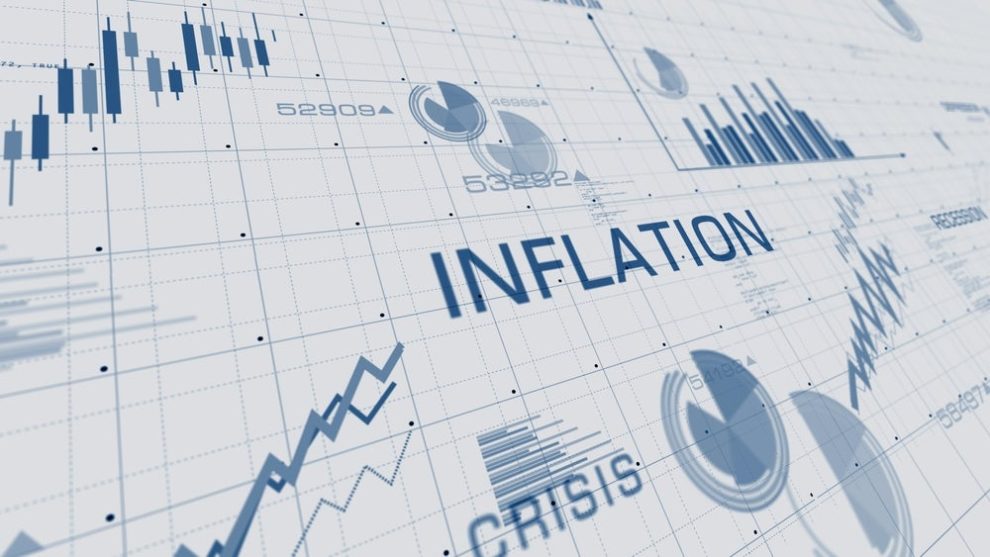The Consumer Price Index for April, due Tuesday morning, could test Wall Street’s renewed bullishness after a major U.S.-China tariff rollback fueled risk-on sentiment.
Despite a slightly defused trade war, the inflation print could tighten the Fed’s hand further, especially if prices came in hotter than forecast.
Wall Street economists agree that the annual headline inflation rate will remain at 2.4%—the 49th straight month above the Federal Reserve’s 2% target.
Inflation is forecast to rebound from a 0.1% drop in March to 0.3% in April. Core CPI, which excludes food and energy, is expected to rise 0.3% monthly and hold steady at 2.8% annually.
Bank America’s economist Stephen Juneau warns that “larger increases are in the pipeline” due to front-loaded demand and the lingering impact of April’s tariff shock.
See Also: AMC Networks’ Sales Drop As Analyst Warns Of ‘Continued Pressure’ On Revenue
Fed Rate Cut Expectations Collapse After US-China Trade Truce
The surprise U.S.-China trade breakthrough on Monday delivered another blow to short-term Fed cut bets. With tariffs slashed by over 100 percentage points for at least 90 days, economic uncertainty tied to supply chains and pricing has decreased.
Markets now price just an 8% probability of a 25-basis-point cut in June, according to CME FedWatch data. That’s down from nearly 40% a week ago. The odds for a July cut stand at 42%, while expectations for two cuts by December have dropped to 72%, from nearly three cuts priced before last week’s FOMC meeting.
The Federal Reserve kept rates unchanged for a third consecutive meeting in May and emphasized that “uncertainty about the economic outlook has increased,” citing risks of both higher unemployment and persistent inflation.
Fed Chair Jerome Powell said policy is in a “good place” and the central bank will wait for more clarity on trade and prices.
“Inflation remains above the Federal Open Market Committee’s 2% target, and further progress on disinflation has been slow,” said Fed Governor Adriana Kugler on Monday, reinforcing the central bank’s cautious stance.
Tariffs: A Short-Term Boost To Prices?
While the U.S.-China truce reduces long-term inflation risk, at least from a supply-side perspective, April may still show upward price pressures as businesses and consumers reacted to the previous tariff escalation.
Bank of America indicates that tariff revenues and effective rates rose about 2 percentage points in April — a modest but broad-based input cost pressure.
Core goods inflation is expected to rise 0.1% month-over-month after a 0.1% drop in March, driven by front-loaded demand and rising auto prices. Juneau highlighted a 2.7% monthly spike in the Manheim Used Vehicle Value Index as another red flag.
“Tariffs should be a modest boost to goods prices this month,” Juneau said, “but larger increases are in the pipeline.”
Services inflation may be tamer. The analyst expects a slight moderation in rent inflation and is watching categories like airfares, lodging and car rentals for signs of weakening demand, which is already visible in card spending data.
According to veteran Wall Street investor Ed Yardeni, “increases like the 2.7% month-over-month jump in the Manheim Used Vehicle Value Index in April from March bear watching.”
“Higher prices paid for imports due to tariffs are also driving up service sector firms’ costs, feeding through to higher prices,
notably in consumer-facing industries such as restaurants and hotels,” said S&P Global’s chief economist Chris Williamson in the latest U.S. Services PMI report.
What To Expect In Markets
It’s unlikely Tuesday’s inflation report derails Wall Street’s tariff-relief rally—unless the numbers come in well above expectations.
The SPDR S&P 500 ETF Trust SPY — which tracks the S&P 500 index — surged 2.6% on Monday to an over two-month high on hopes that the trade truce reduces supply-side price pressures and stabilizes global growth.
Still, sticky inflation would signal that the Fed’s 2% goal remains distant, reinforcing its higher-for-longer interest rate stance. A hotter April inflation print might strengthen the dollar and increase bond yields.
The U.S. dollar, which weakened during April’s tariff escalation, is rebounding as of May 12. Meanwhile, Treasury yields are climbing: the 30-year bond yield hovered at 4.87% on Monday, near its 2025 high of 5%.
Now Read:
Image: Shutterstock






Add Comment